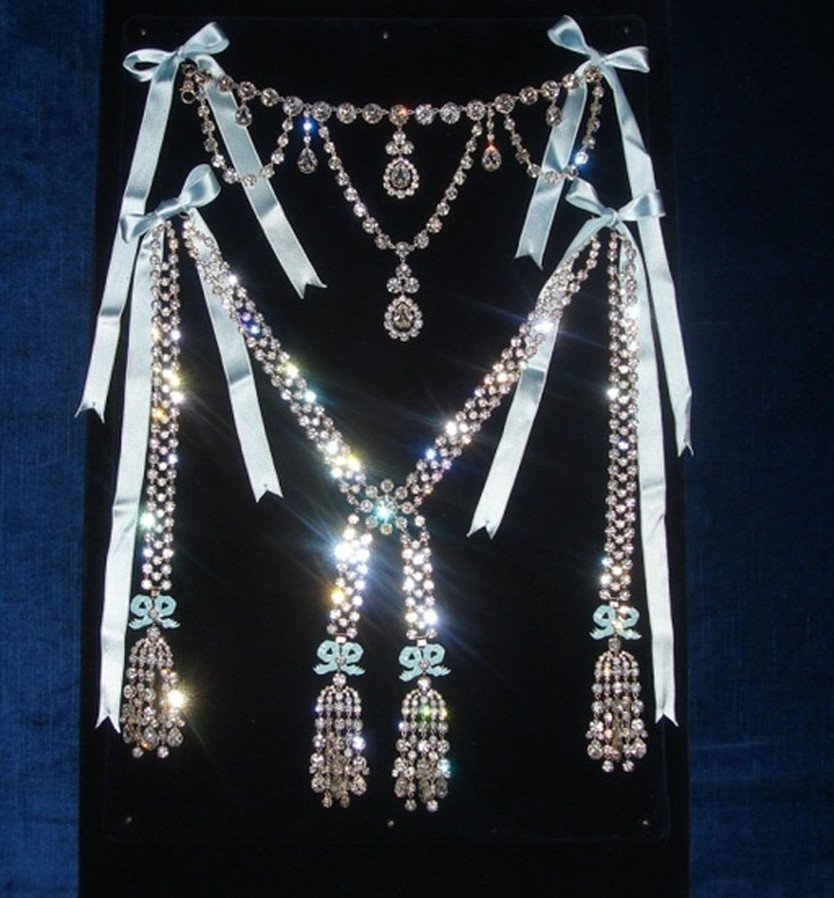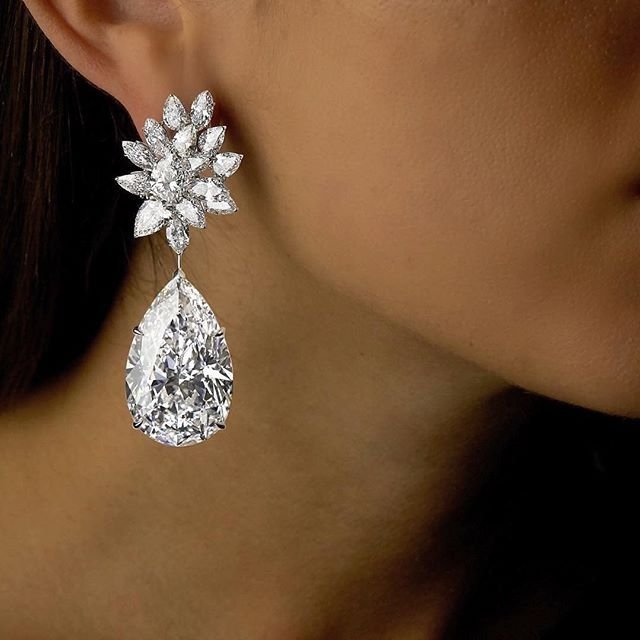DIAMONDS TO LOSE YOUR HEAD OVER: BOEHMER ET BASSENGE
Two of the most astonishing pieces of jewellery to be created since the French Revolution are to be auctioned at Christie’s Geneva on the 15th November. They consist of a necklace called Le Jardin d’Isabelle and earclips named Miroir d’Amour- appropriate Rococo nomenclature given the name of the creator: Boehmer et Bassenge.
Boehmer et Bassenge's new Jardin d'Isabelle diamond necklace, composed entirely of pink and D flawless diamonds. The estimate for their upcoming auction at Christie's is $8-12 million.
The original Boehmer et Bassenge were the court jewellers to Marie Antoinette, who created an infamous diamond necklace which could be said to have been the fuse that lit the French Revolution. The Parisian jewellers began composing a necklace in 1772, consisting of 647 diamonds weighing a total of 2800 carats, all of them reputed to be D flawless, costing some 2 million livres. The jewellers were hoping to persuade Louis XV to buy it for his mistress Madame du Barry, who was known to be exceedingly fond of diamonds. Unfortunately, before the necklace was finished the King died and Madame du Barry was sent away, leaving Boehmer and Bassenge without a buyer. The necklace was offered to his successor Louis XVI for his new queen, Marie Antoinette, but the royal couple turned it down, the Queen stating that she had enough diamonds. The monarchs sensibly suggested to the pair that at such an exhorbitant price they might like to break up the piece and sell the stones separately in order to recoup their costs. But Boehmer and Bassenge had spent so much time and energy creating this unparalleled jewel that they could not bring themselves to carry this out. Rather pathetically, they toured most of the courts of Europe trying to flog the necklace without success, even going as far as Constantinople to offer it to the Sultan.
The fuse that lit a Revolution: A replica of the diamond necklace by Boehmer and Bassenge. Turned down by Marie Antoinette and all the other crowned heads of Europe, this piece cemented France's hate against the Queen.
Hearing of their plight, an adventuring conwoman calling herself the Comtesse de la Motte offered her services to the jewellers to act as a go between between them and the Queen in order to effect the sale; in fact it was all an elaborate ruse to steal the necklace. The Comtesse in fact had no position or influence at Court and had never even met the Queen. However, she managed to persuade the gullible Cardinal de Rohan, Grand Almoner of France. He had fallen out of royal favour; desperate to regain his high courtly position, he gullible enough to try anything. The Comtesse persuaded him through various means that she was in the Queen’s confidence and that she was longing for the famed necklace, but was too frightened of public opinion to buy it openly. Would de Rohan act as intermediary between the Crown and Boehmer and Bassenge and act as buyer on her behalf? Astonishingly, he agreed. The necklace was delivered to the Cardinal, who passed it to the Comtesse to give to the Queen. The Comtesse promptly ran off to London, broke up the necklace and sold the stones. Inevitably, when the jewellers did not receive the first instalment owed, they approached the Queen, who was confused to say the least, and the entire affair came out into the open. All those implicated went on trial, including the duped Cardinal. At this date (1785) Marie Antoinette was widely loathed for her perceived extravagance; the trial effectively became a trial on the Queen’s character and although the Comtesse de la Motte was convicted as a thief, the Cardinal was acquitted. It was a widely held belief by the public at this point that the Queen had secretly spirited away the necklace. The whole affair merely solidified her as a scapegoat figure for the country’s economic woes and unleashed a poisonous vitriol towards her of an intensity that would be hard for a modern mind to comprehend. The ironic thing is that in her portraits Marie Antoinette is rarely seen wearing a necklace of any kind.
Miroir d'Amour earrings by Boehmer et Bassenge. Each of the diamonds is a D flawless, and over 50 carats- the largest of their kind ever to be offered at auction.
The new incarnation of Boehmer et Bassange is as yet hard to pinpoint. A thorough internet search yields only opaque results and elegantly worded press releases. The message, however, is loud and clear: to create pieces of such peerless quality that they will pass into legend. And no doubt they will- in accordance with the famous name they are trading under, Boehmer et Bassenge work only with D Flawless diamonds. The Miroir d’Amour earrings are the largest pear D Flawless pair of pear shaped stones ever to be offered at auction. The two stones weigh over 50 carats each and the pre-sale estimate is $20-30 million. The Jardin d’Isabelle necklace, although not the gargantuan 2800 carats like the Queen’s, is nearly 150 carats, the largest stone in it coming in at 31.8 carats. The estimate for the necklace is $8-12 million. These lots are being offered without reserve, so it is worth watching this space to see what happens. Every single diamond in the piece is D-Flawless. These stones are not just the top 1% of diamonds mined; they are the world’s top 100th of 1%. Regardless of what happens at auction it is an astounding, unheard of collection. Madame du Barry, the original intended recipient of the original necklace, would have approved.





